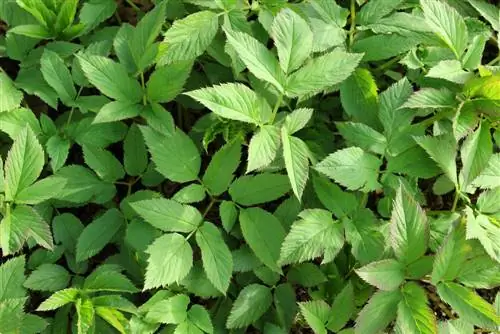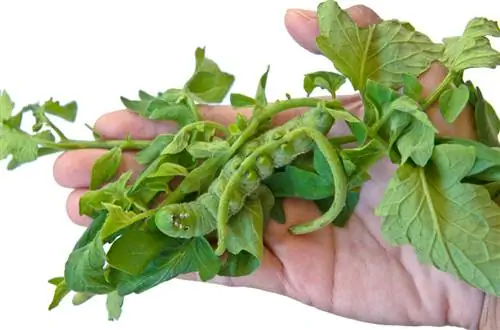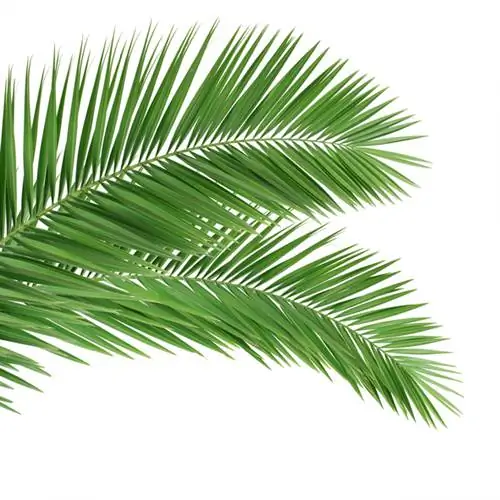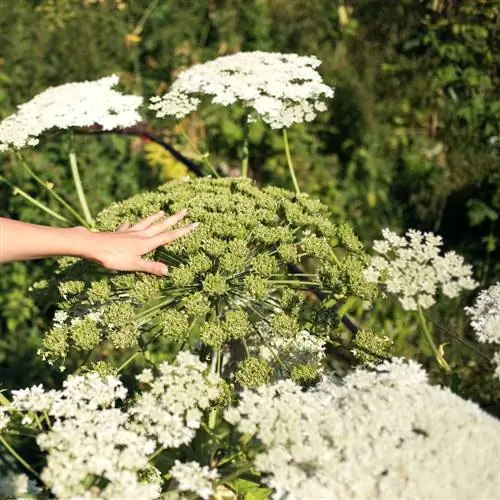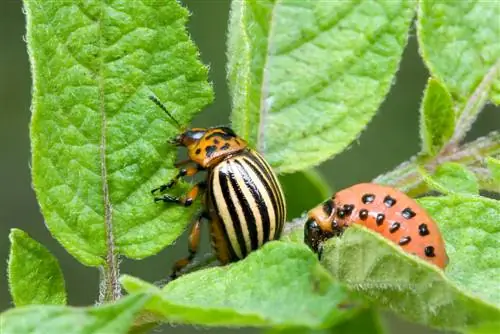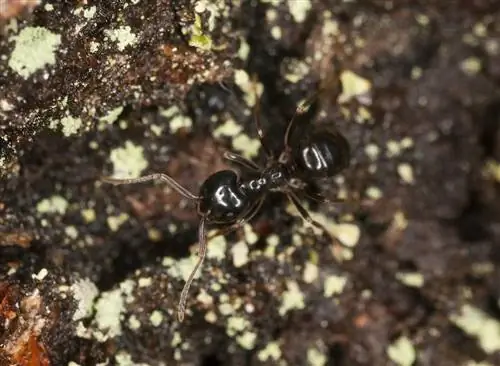- Author admin [email protected].
- Public 2023-12-16 16:46.
- Last modified 2025-01-23 11:21.
If you look closely, there are actually no weeds at all. Rather, these plants are wild-growing plants that undesirably spread where garden enthusiasts would like to cultivate vegetables and ornamental plants. This article will help you clearly identify the most common weeds.
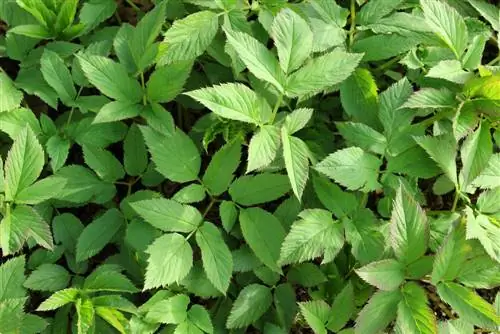
How can I identify weeds in the garden?
To identify weeds in the garden, pay attention to plant characteristics such as leaf shape, flower color and growth behavior. Common weed species include nettle, thistle, groundweed, ragwort, clover, dandelion, moss, Persian speedwell, datura, meadow foamweed and morning glory.
To be described in more detail:
- Stinging Nettle
- Thistle
- Giersch
- Jacobs Ragwort
- Clover
- Dandelions
- Moss
- Persian Speedwell
- Datura
- Meadow Foamweed
- Fence winch
Stinging Nettle
The large nettle can reach a height of up to 1.50 meters. You can recognize them by their coarsely toothed leaves that taper towards the front. Stinging hairs are located on the stem and leaves, which cause burning pain and red welts on the skin when touched. The flowers are quite inconspicuous. They are yellowish in color and hang in small panicles from the uppermost leaf stalks.
Stinging nettle leaves are edible and, when dried, make an aromatic, water-inducing tea. The plant is also important in organic gardening as a basis for liquid fertilizers and sprays.
Thistle
In the garden, the thistle is the main cause of discontent. It initially forms a rosette directly on the ground, some of which have bays and are reinforced with spines on the edge. A very thick stem grows out of this. The flower is hemispherical and consists of many purple individual flowers.
Once established in the garden, the prickly weed spreads through sprouts that grow from the main root. Thistles are true survivors; A new shoot can even sprout from a root section that is only half a centimeter long.
Giersch
This large-leaved foliage plant drives many gardeners to despair. It grows so stubbornly that it is difficult to get rid of. Greedweed is a white-flowering, ground-covering herb with large leaves that are double tridentate. It can reach heights of up to one meter.
Giersch may have been on the menu as early as the Stone Age. It can be prepared like spinach or eaten raw.
Scallop Ragwort
Jacob's ragwort first produces a rosette of leaves in spring, from which the pinnate leaves unfold. The yellow flowers on tall stems appear between June and August. The plant grows between 30 and 100 centimeters high.
The ragwort has a strong liver-toxic effect and is therefore one of the poisonous weeds. To date, the poisoning cannot be treated. In an ecologically friendly manner, you should consistently dig up the ragwort and dispose of it with household waste.
Clover
Probably everyone has already started looking for the lucky four-leaf clover. Meadow clover is even grown as a valuable fodder plant. But it also spreads unintentionally on lawns. For this reason, many garden owners consider clover to be a weed.
Typically the leaves are tripartite. Clover produces white or pink flowers between May and September. Clover flowers contain a lot of nectar and are a valuable pasture for bees.
Dandelions
As a yellow-flowering weed that likes to spread in the lawn and is very robust, the dandelion only pleases children. As soon as the snow has melted, it sticks its jagged, elongated leaves out of the ground in the form of a rosette. From this the bright yellow flower develops, which within a few weeks turns into a “dandelion” from which numerous small umbrellas are carried away by the wind.
Moose
Mosses are among the oldest plants on our planet. They can live for several thousand years. The green carpets are flowerless spore plants that reproduce through the so-called alternation of generations. You won't find roots in mosses. They hold on to the substrate with rhizoids (cell threads).
Mosses can be divided into three different types:
- hornmosses
- Liverworts
- Moss
They prefer locations in the garden that are hardly exposed to sunlight. The most effective way to combat moss is to thin out large plants. Also make sure that the floor is ventilated, this deprives the green cushions of their livelihood.
Persian Speedwell
Initially cultivated in botanical gardens, the plant has gone wild and is now one of the weeds that are increasingly spreading in gardens. Strongly forming runners, it is decorated with blue flowers that show a white throat. It has small, toothed, round leaves that grow oppositely. The Persian speedwell forms strong cushions in the lawn and reaches a height of ten to forty centimeters. The Persian speedwell is a reliable clay pointer.
Datura
The datura has only become increasingly common as a weed in recent decades. Like groundweed, it is a two-leaf weed. It has large leaves that are long-stemmed and pointedly lobed. The trumpet flowers stand upright in the forks of the branches. They form densely spiny capsules about the size of a walnut in which the almost black seeds are located.
Attention: The entire plant is poisonous!
Meadowfoam
This wild plant grows up to sixty centimeters tall. It has strongly pinnate leaves consisting of three to four pairs of leaves and produces numerous delicate purple flowers with four petals.
winds
The shoots of these plants grow up to three meters long. They always wind their way up anything that offers support in a clockwise direction. If the morning glory cannot find a climbing aid, it thrives like a ground-covering herb. The leaves are arrow-shaped and grow alternately. From June onwards, the morning glory blooms with large, white, odorless funnel flowers.
Large pink flowers are the hallmark of field bindweed, which is increasingly spreading in gardens as a weed. Both species can become a real pest because they are very fast-growing and tend to strangle other plants.
Tip
When you destroy weeds, please remember that these plants play a high role in the natural cycle and serve as valuable food for insects. Weeds are also bioindicators that show the nutrient content and even the pH value of the soil. It is therefore preferable to use manual labor to combat unwanted plants and avoid chemical treatment, as this almost always affects the sensitive ecosystem.

